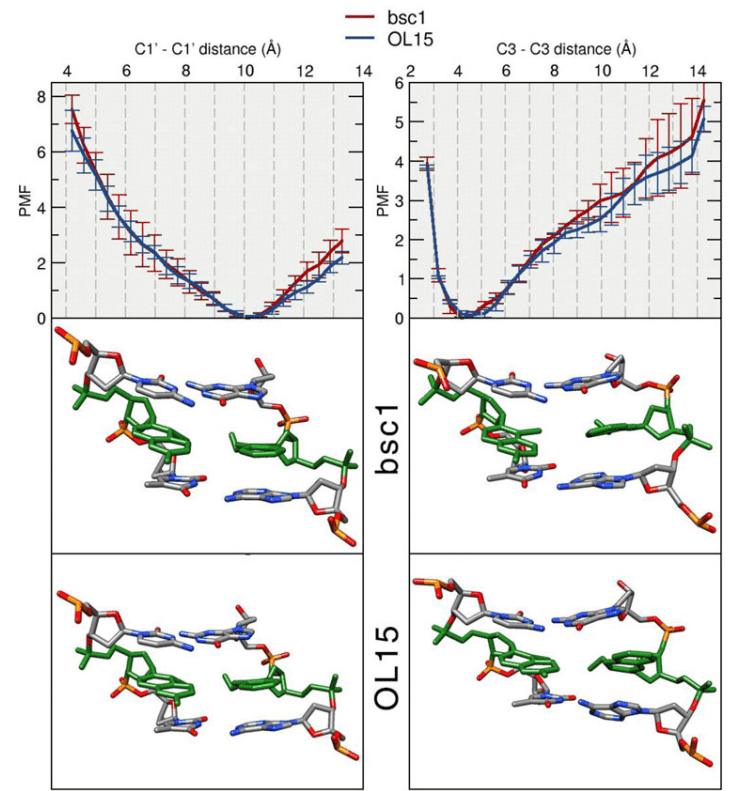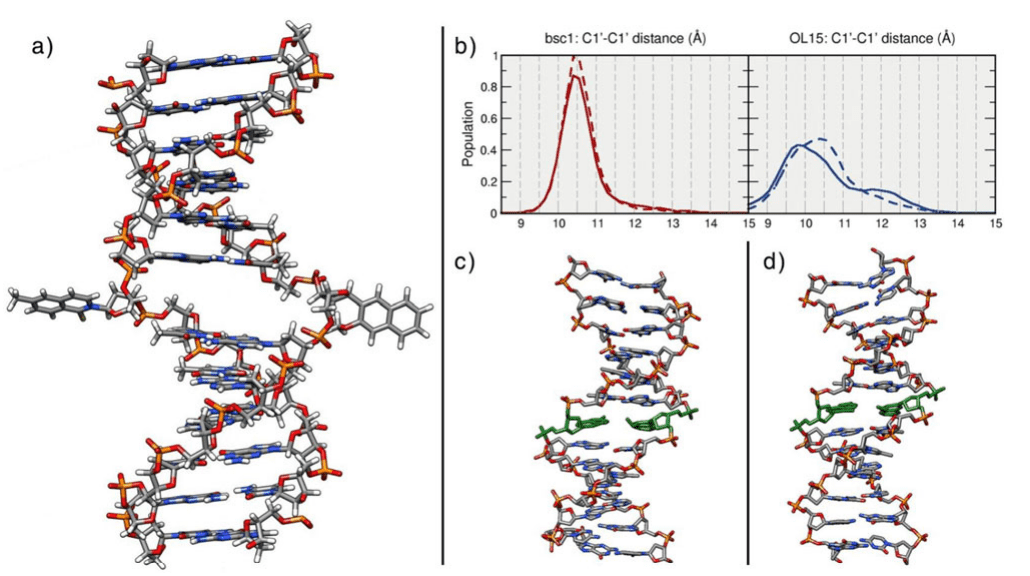Elucidating the pairing of non-hydrogen bonded unnatural base pairs (UBPs) is still a controversial subject due to the lack of specificity in their mutual interactions. Experimentally, NMR is the method of choice but the DNA strand must be affixed on template of sorts such as a polymerase protein. Those discrepancies are well documented in a recent review which cites our previous computational work, both DFT and MD, on UBPs.
Since that last paper of ours on synthetic DNA, my good friend Dr. Rodrigo Galindo from Utah U. and I have had serious doubts on the real pairing fashion exhibited by Romesberg’s famous hydrophobic nucleotides d5SICS – dNaM. While the authors claim a stacked pairing (within the context of the strand in the KlenTaq polymerase enzime), our simulations showed a Watson-Crick-like pairing was favored in the native form. To further shed light on the matter we performed converged micro-seconds long simulations, varying the force field (two recent AMBER fields were explored: Bsc1 and OL15), the water model (TIP3P and OPC), and the ionic compensation scheme (Na+/Cl– or Mg2+/Cl–).
In the image below it can be observed how the pairing is consistently WC (dC1′-C1′ ~10.4 A) in the most populated clusters regardless of the force field.

Also, a flipping experiment was performed where both nucleotides were placed 180.0° outwards and the system was left to converge inwards to explore a ‘de novo’ pairing guided solely by their mutual interactions and the template formed by the rest of the strand. Distance population for C1′ – C1′ were 10.4 A for Bsc1 (regardless of ionic compensation) and 9.8 A for OL15 (10.4 A where Mg2+ was used as charge compensation).

This study is now published in the Journal of Biomolecular Structure & Dynamics doi.org/10.1080/07391102.2019.1671898.
Despite the successful rate of replication by a living organism -which is a fantastic feat!- of these two nucleotides, there is little chance they can be used for real coding applications (biological or otherwise) due to the lack of structural control of the double helix. The work of Romesberg is impressive, make no mistake about it, but my money isn’t on hydrophobic unnatural nucleotides for information applications 🙂
All credit and glory is due to the amazing Dr. Rodrigo Galindo-Murillo from the University of Utah were he works as a developer for the AMBER code among many other things. Go check his impressive record!
